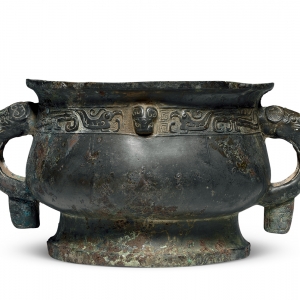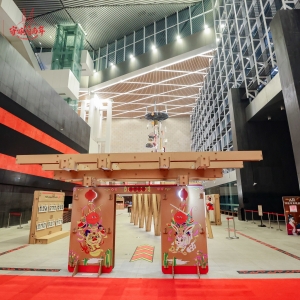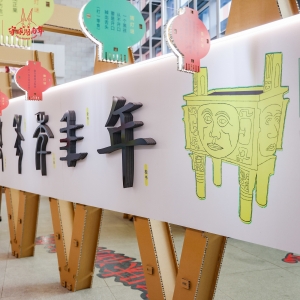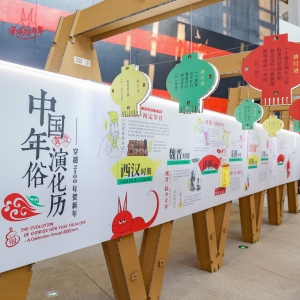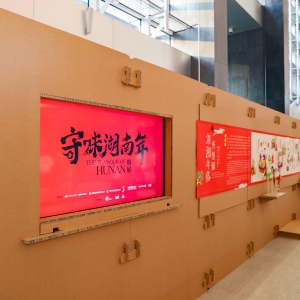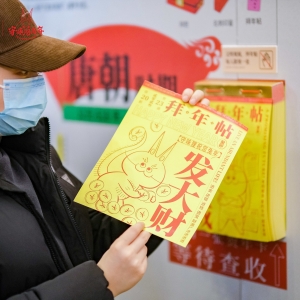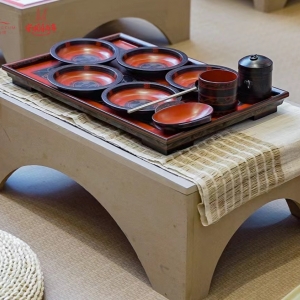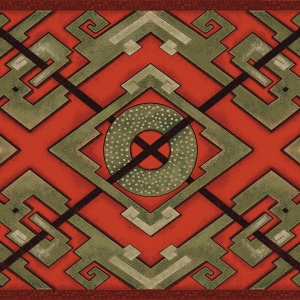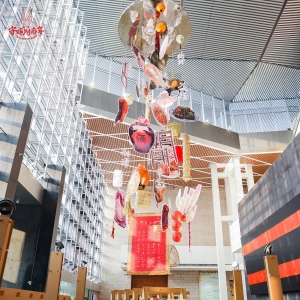馆内
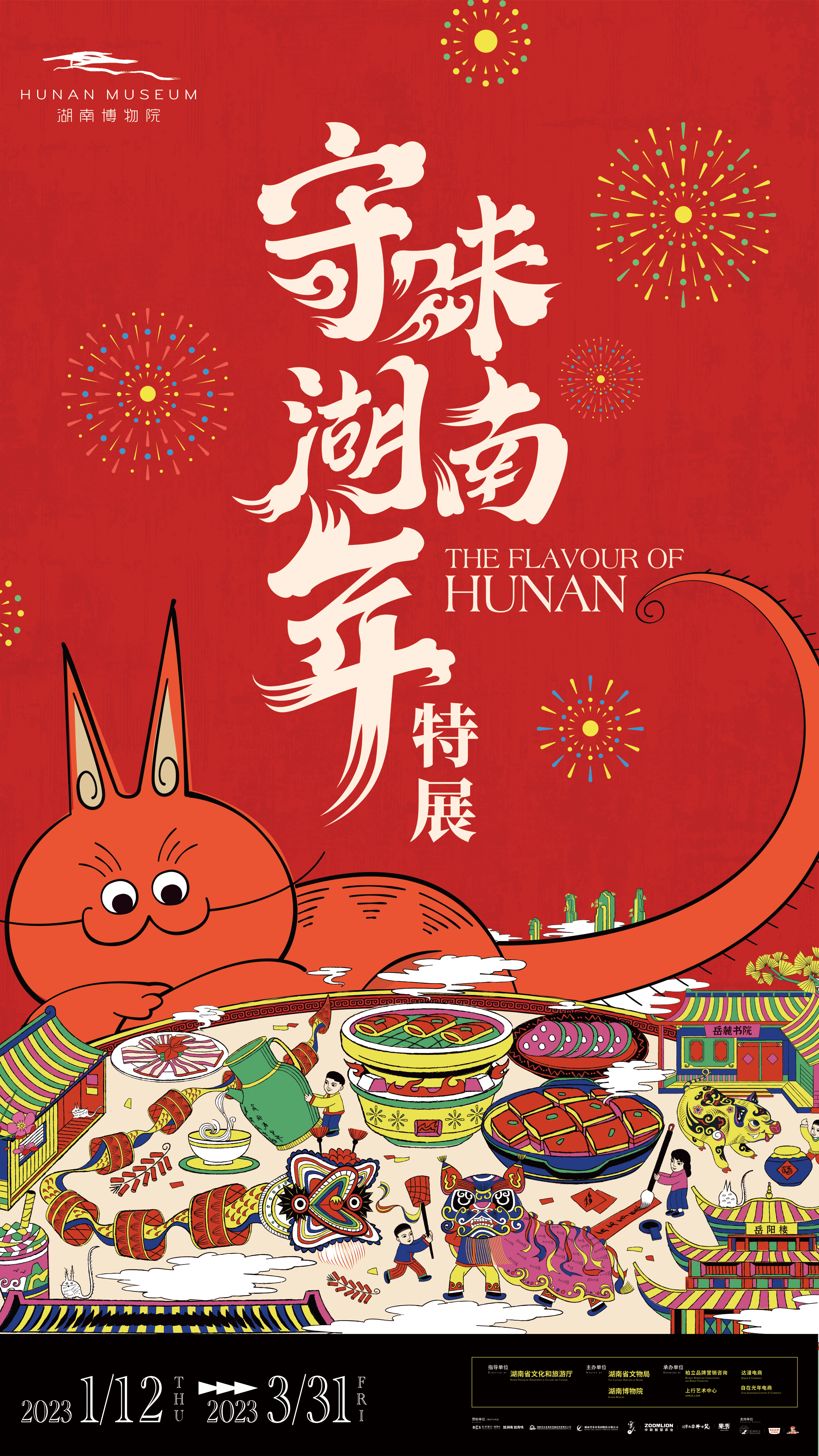
展览介绍
The Flavor of Hunan
The Spring Festival is the most solemn traditional festival of the Chinese nation. Taking the Spring Festival as an opportunity, the special exhibition "the Flavor of Hunan" invites the audiences to gather at the Hunan Museum to experience the customs, sceneries and local specialties of Hunan and share the taste of the Spring Festival.
The Hunan Museum,with its abundant collection of cultural relics resources, brings cultural relics alive and connects history with the present through the scene experience of juxtaposition of ancient and modern times and comparison of time and space. The design of the lacquer plate, a leopard cat, excavated from Mawangdui in the Western Han Dynasty is the image ambassador of this exhibition. It travels from ancient to modern times, travels all over Hunan province, and explores the unique taste of Hunan’s new year. From the family banquet of sitting on the ground and eating separately in Western Han Dynasty to the round table dinner of the New Year’s Eve these days, the exhibition focuses on telling the Hunan’s and China’s stories behind the cultural relics and local sceneries.
Features
Interesting Knowledge: customs of Hunan and China are vividly interpreted.
Drawing on the visual language of the Tantou New Year pictures(it is a kind of painting style which is unique to Chinese Han nationality), with the leopard cat as the image ambassador, visitors will travel through ancient and modern times to see the development of Chinese New Year’s customs, and travel to Hunan to appreciate the New Year’s customs of 14 cities.
Scene Re-creation: Western Han banquet experience
Combining with the collection of Hunan Museum, the exhibition presents Western Han Dynasty banquet in different occasions. With the help of modern means of expression, audiences can interactively enjoy etiquette, food and vessels of Western Han.
Art Deconstruction: a table of New Year's Eve dinner
Applying deconstruction techniques, pop art to present a table of contemporary Hunan New Year's Eve dinner in the Hunan Museum, forming a contrast with the Western Han Dynasty banquet scene where people sit on the ground and eat separately.
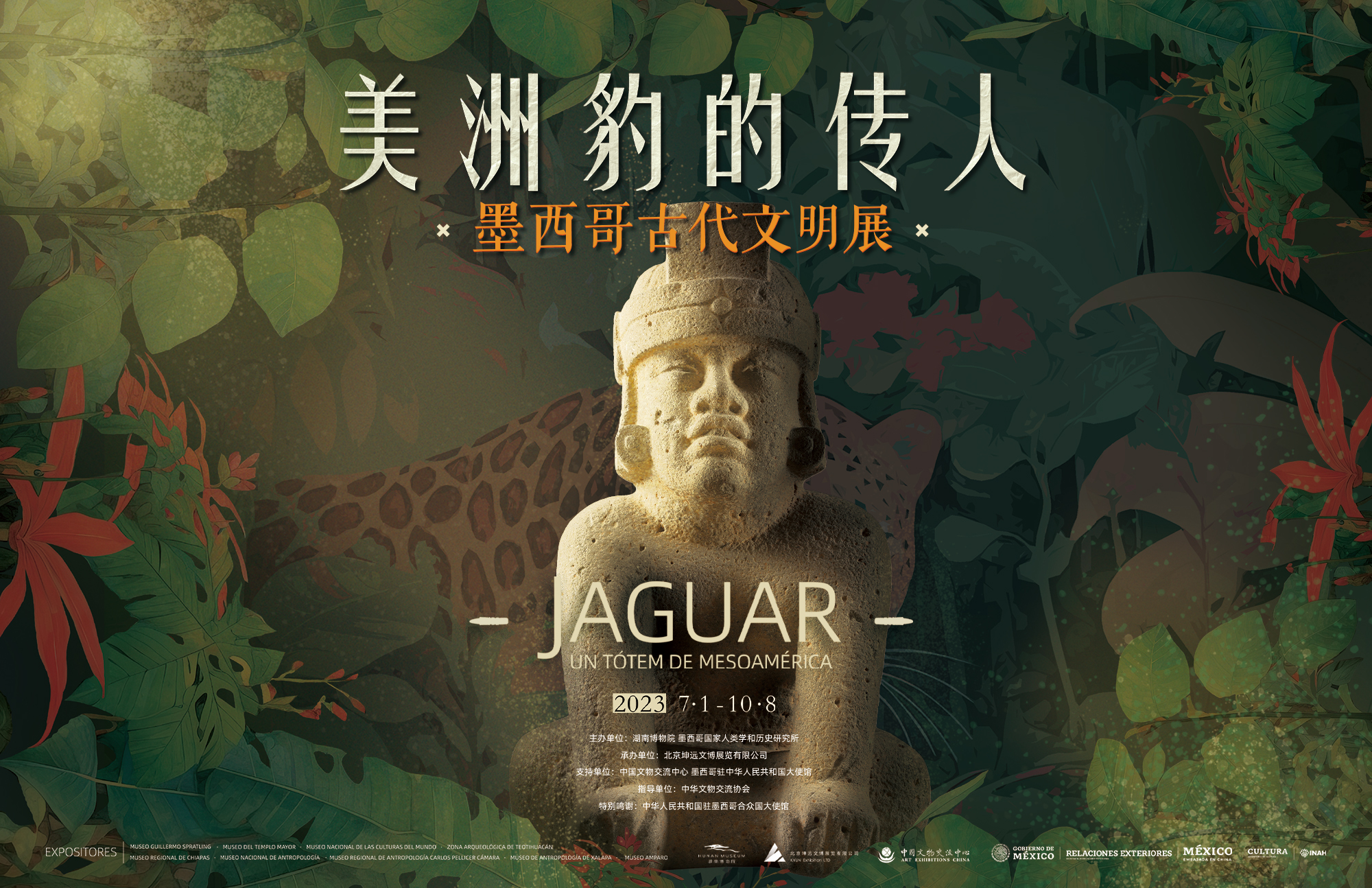
展览介绍
美洲豹的传人——墨西哥古代文明展
墨西哥古代文明以其丰富的文化底蕴、醇厚的历史韵味和独有的风格特色傲然于世,其文化形态多样,相互交织,互为影响。其中奥尔梅克文化、玛雅文化、特奥蒂瓦坎文化、阿兹特克文化等是墨西哥古代文明的重要中心文化。具有神圣品格的美洲豹,更是墨西哥诸多文化中的重要象征,折射出当地的宗教观念、精神内涵和社会面貌。
本次展览汇集了9家墨西哥文化机构收藏的154件(组)精品文物,时间跨度从公元前2300年到公元16世纪,以“美洲豹”为主线,以文化人类学为视角,对古代墨西哥人生活的地理环境(水创造的文明)、生产生活方式(玉米的故乡)、精神信仰(美洲豹的崇拜)进行阐释,回溯墨西哥不同时期、不同地域、不同族群的古代文化,向观众集中展示璀璨悠久、异彩纷呈的墨西哥古代文明,揭示美洲豹在墨西哥古代社会生活中所具有的极其重要的作用。
展品欣赏
- “王子”豹人石雕
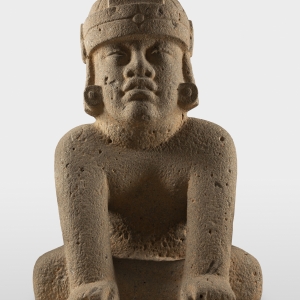
- 雨神特拉洛克陶像
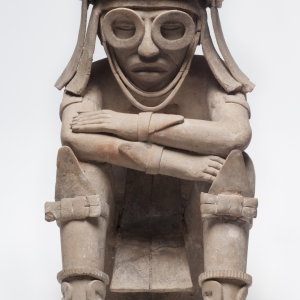
- 雨神特拉洛克石雕像
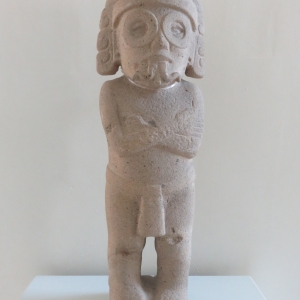
- 地下世界众生形象陶香炉盖
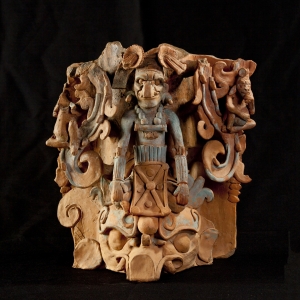
- 地下世界众生形象陶香炉盖
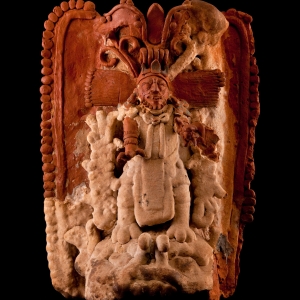
- 美洲豹头上的人物形象陶香炉
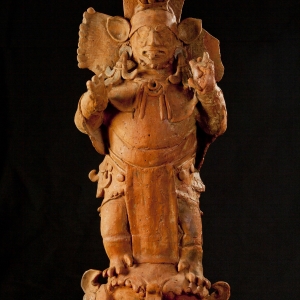
- 祭祀用的人首马镫形陶壶
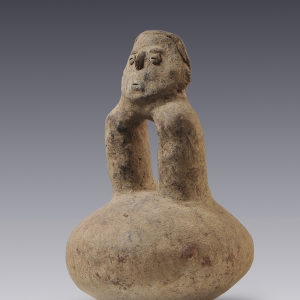
- 祭祀用的豹形陶罐
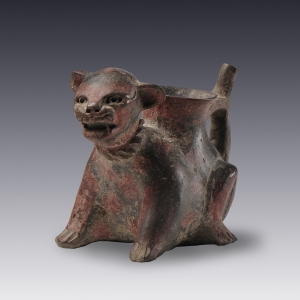
- 祭祀用的羽毛纹豹形陶罐
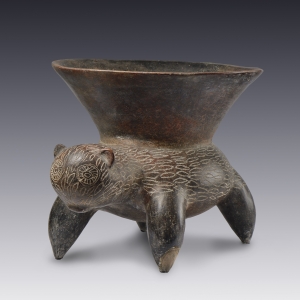
- 豹人玉雕
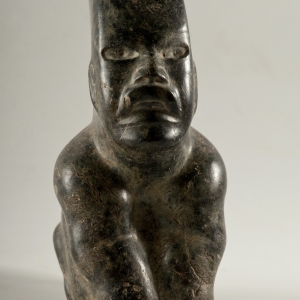
- 装饰有V形沟壑的豹人首石雕
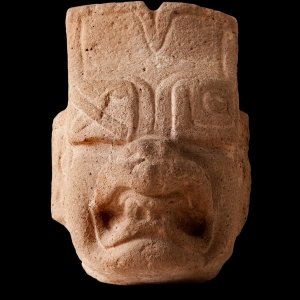
- 公元前1800—前200年 25.5×5×2厘米 塔巴斯科州 卡德纳斯 奥约沙尔 卡洛斯‧裴里瑟‧卡玛拉人类学博物馆藏查看更多
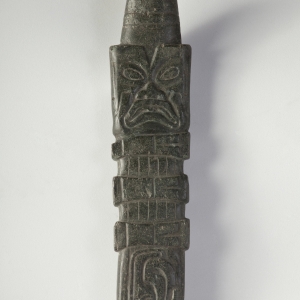
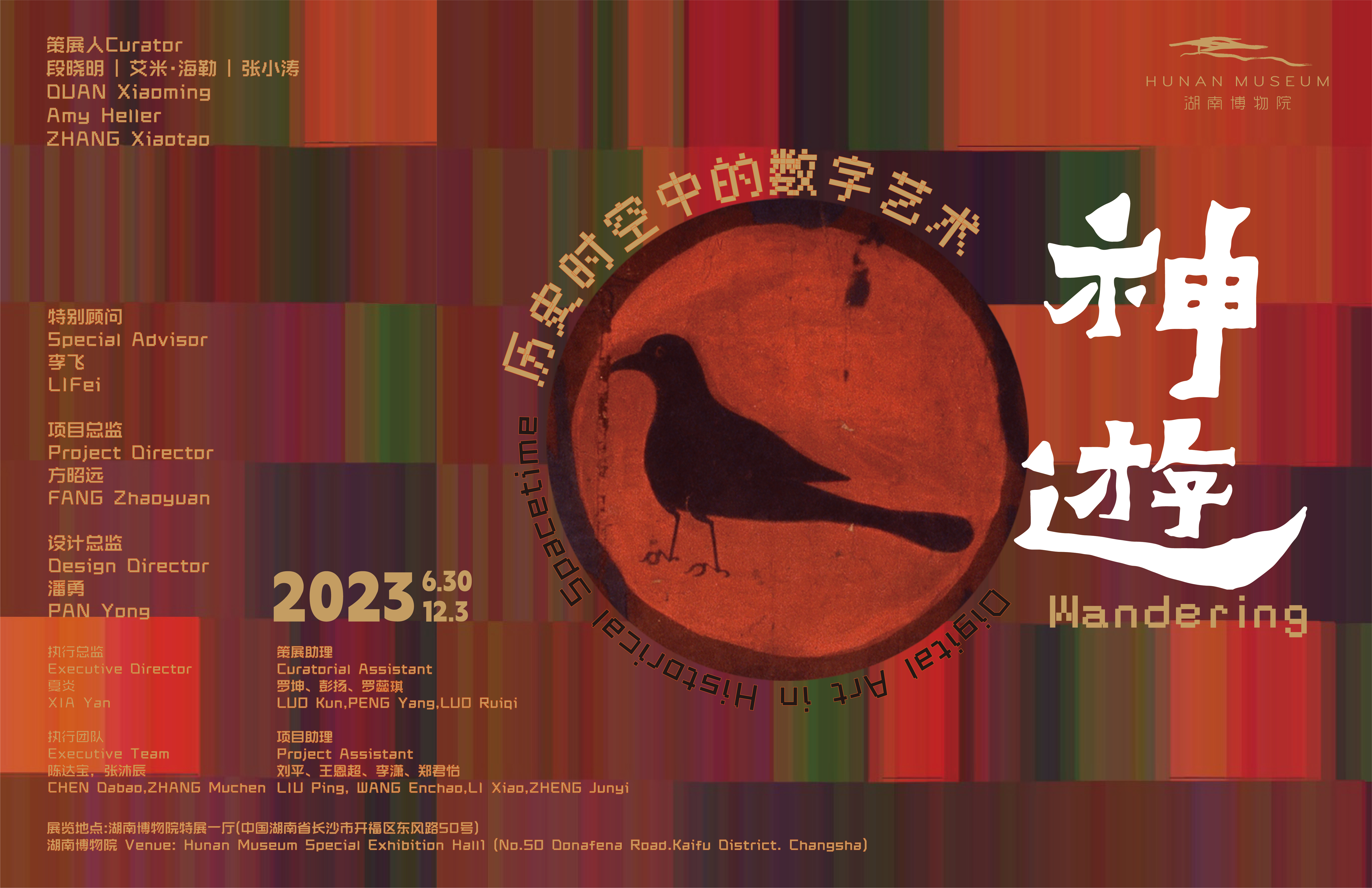
展览介绍
神游——历史时空中的数字艺术
湘江之畔,永生之梦。青铜大禾,华夏锦绣。
马王堆汉墓、商周青铜器、数字艺术、虚拟世界,当它们发生“碰撞”,国宝迎来了炫酷的打开方式。
“神游——历史时空中的数字艺术”展,从全球数字艺术的思想、观念与方法入手,进行一场历史考古与数字艺术的跨学科、跨媒介实验,同时也是具有学术性、公众性、在地性和国际性的科技艺术项目。展览结合湖南历史文脉和湖南博物院国宝文物,与数字艺术进行了一次深度的对话与转译。从古代的神仙信仰到今天的元宇宙跨时空穿越碰撞,这是古今文明之间的交相辉映与回响,是现当代艺术与中国优秀传统文化的跨界交往,也是现代科技向伟大古典文明的致敬。
作为湖南首次举办的国际数字艺术展览,涵盖了卡塞尔文献展、威尼斯双年展、奥地利林兹艺术节等全球最重要展览的参展作品。这不仅是中国数字艺术展示、教育、科研的一次重要事件,更是全球数字艺术交流的重要峰会。
展品欣赏
- 商代人面纹方鼎
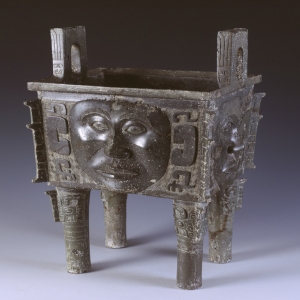
- 姚燕安 + 樊丽娜《多足行鼎》
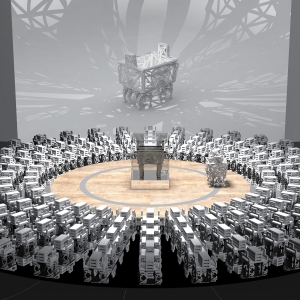
- 商代豕形铜尊
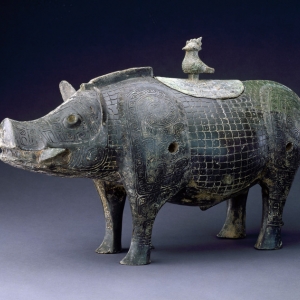
- 张沐辰《数字猪尊》
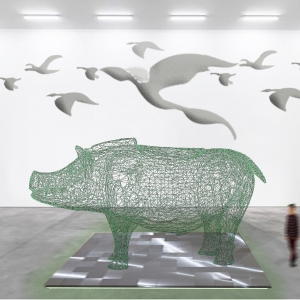
- 马王堆汉墓T形帛画(复制品)
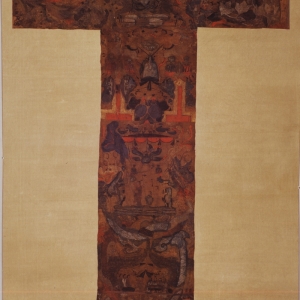
- 张小涛+张无量《神鸟》
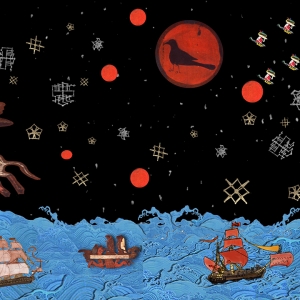
- 素纱单衣(复制品)
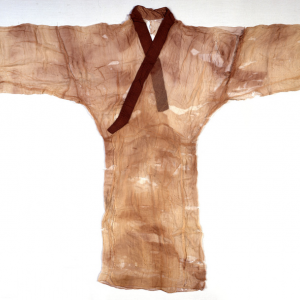
- 梁绍基《平面隧道》

- 梁绍基《8字谜》
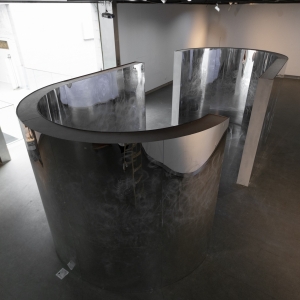
- 周雯静《如云雾,如蝉翼》
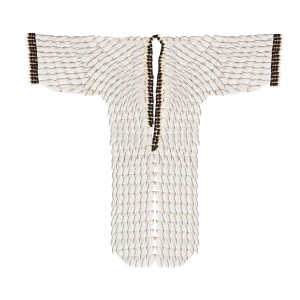
- 绛红纱地印花敷彩纱丝绵袍(复制品)
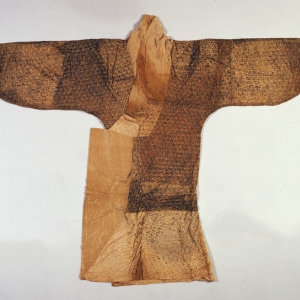
- 数字艺术、机械装置 /300×700cm/ 绢本绘画、钢、竹、木、影像 /2023 将“印花敷彩纱丝绵袍”中的衣纹图案提取为二维动画,在环形显示屏中播放有空间关系的衣纹图案的多维变换。装置部分由九层环形构成,每层12片,每片竹篾绢本上绘制有“印花敷彩纱丝绵袍”中的衣纹图案,包含绘花和印花两种工艺制作的地纹枝蔓与花穗、蓓蕾和叶,装置可上下移动以模拟花片的盛开与闭合。查看更多
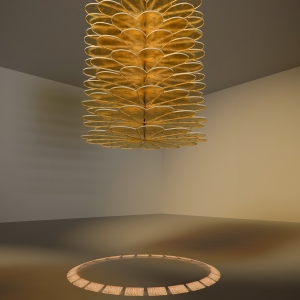
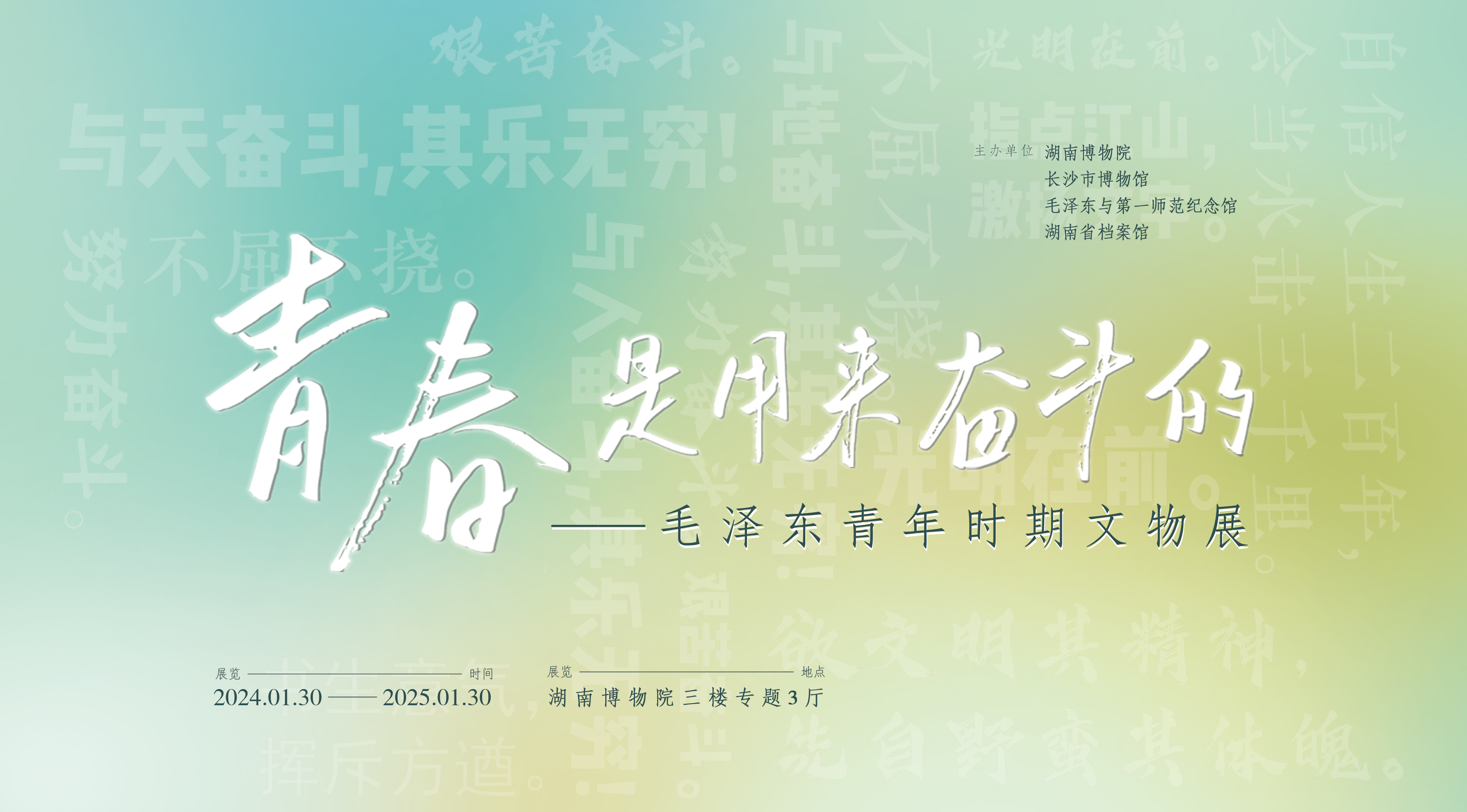
展览介绍
青春是用来奋斗的 ——毛泽东青年时期文物展
百年来每一次时代的向前,都倒映着年轻人的身影,他们用信念把黎明提前,用奋斗抚平动荡,用青春谱写时代之歌。
青年毛泽东胸怀远大理想,求知问学、锤炼革命本领,追求真理、勇担民族复兴使命,知行合一、唤醒广大工农群众。他直面困难,敢于斗争,主张奋斗。
本展览以时间为轴,甄选来自湖南博物院、长沙市博物馆、毛泽东与第一师范纪念馆、湖南省档案馆的150余件展品,展示青年毛泽东从师范求学到领导工农运动的奋斗历程,讲述他在锤炼品德修为、树立远大理想、热爱伟大祖国、担当时代责任等方面的榜样力量。
展品欣赏
- 1913年《湖南省立第一师范学校章程》
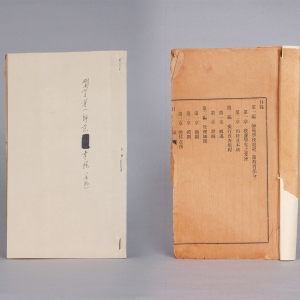
- 1914年《湖南省立第一师范学校管理细则》

- 1918年《湖南省立第一师范学校志》
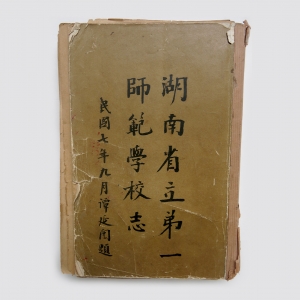
- 1914年《湖南省立第一师范学校职教员学生一览表》
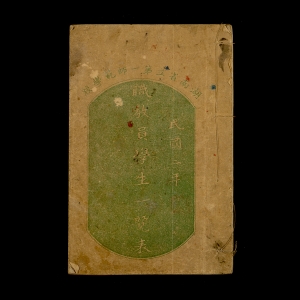
- 20世纪初出版的《新民丛报》50777
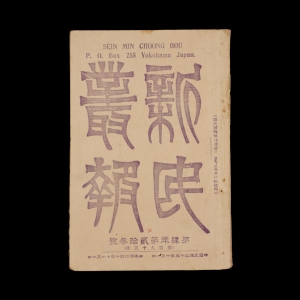
- 清拓岳麓书院法帖
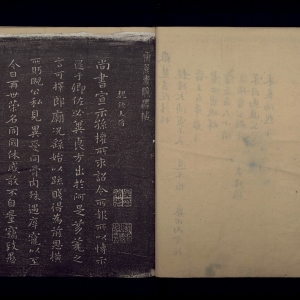
- 1917年《新青年》第3卷第2号
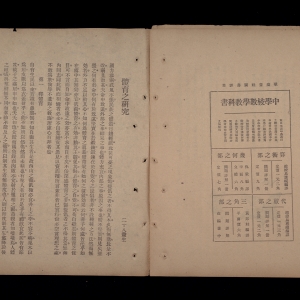
- 1917年6月《湖南省立第一师范学校同学录》
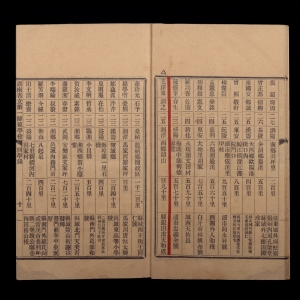
- 杨开慧烈士自传手稿
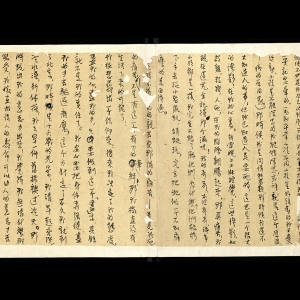
- 《海外乡谈》第二期
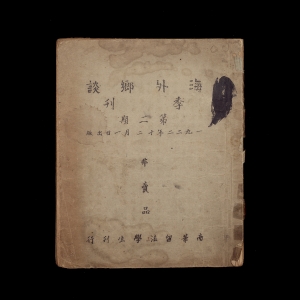
- 1920年2月5日湖南驻沪驱张请愿代表团编印的《天问》周刊
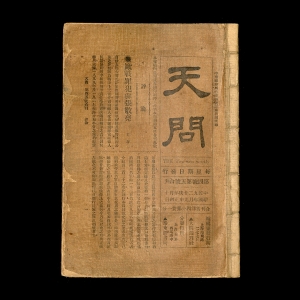
- 《湖南》月刊系驻沪驱张代表团所创办。1919年10月22日,毛泽东同湖南教育界1272人联署发出公启,揭露张敬尧操纵改选并控制省教育会的内幕,反对张敬尧摧残教育事业。公启于1920年2月20日在《湖南》月刊发表。查看更多


展览介绍
守味湖南年——湖南博物院新年特展
百节年为首,春节是中华民族最隆重的传统佳节,“守味湖南年”特展以春节为契机,邀请观众相聚湖南博物院,一起体验湖南的年俗与风物,分享春节的声色滋味。
湖南博物院凭借丰厚的院藏文物资源,以古今并置、时空对照的场景化体验,激活文物,连接历史与当下,展览特地邀请从西汉马王堆狸猫漆盘穿越而来的“守味狸”担任我们的引导员,嬉游古今,踏遍三湘四水,探寻属于湖南的独特年味。从西汉长沙国轪侯府席地而坐、分案而食的家宴,到今天汇聚湖湘十四地州风味的圆桌年夜饭,讲述文物和风物背后的湖南故事,中国故事。
特展看点:
趣味知识:中国年俗、湖南年俗生动演绎
借鉴滩头年画的视觉语言,以守味狸为形象大使,带您穿越古今看中国年俗发展,云游湖南领略十四地州市年俗风物。
场景复刻:西汉筵席体验
结合湖南博物院馆藏,场景化呈现西汉筵席,通过现代表达手法带您互动式体验西汉“分案而食”的礼仪、食材、器皿等。
艺术解构:一桌“空中”年夜饭
用解构的手法,波普的语言在湖南博物院呈现一桌当代的湖南年夜饭,与西汉席地而坐、分案而食的筵席场景形成古今对照。

展览介绍
Squares and Circles—Exhibition of Bronze Mirrors
Bronze mirrors are unique, outstanding, and fabulous among ancient Chinese bronzes. Modern master of Chinese culture Luo Zhenyu ever wrote in his book The catalogue of Ancient Chinese Mirrors, “Ancient Chinese bronze mirrors have exquisite decorations, magnificent and rarely-seen inscriptions, and elegant connotations. It is hard to find these three merits in any other artifact. ” Bronze mirrors are more than that. After the end of the Bronze Age, ding, gui, zun, and other bronze ritual objects gradually disappeared in temples, ancestral shrines, and other special places while bronze mirrors, bronze coins and other small items with expanded production scales were gradually used by ordinary people. Bronze mirrors developed over time. After the prosperity in the Han Dynasty and the first decline in the Wei, Jin, and Southern and Northern Dynasties, bronze mirrors reached its peak of development in the Tang Dynasty, followed by the steady development of the Song,Yuan, Ming and Qing Dynasties, and gradually declined in the mid-and-late Qing Dynasty after the emergence of glass mirrors in the Song, Yuan, Ming and Qing Dynasties. For thousands of years, bronze mirrors have evolved with the times in terms of casting techniques, shapes, ornaments, and inscriptions, and have been upgraded in various ways, which can be considered the only remaining living example with continuous growth among different kinds of bronzes.
Bronze mirrors, as an indispensable utensil in the daily life of the Chinese people, carried many symbolic meanings such as religious beliefs and good wishes, and were frequently shown in poems and songs, legends and other literary works through the ages, such as the widely circulated stories,”a broken mirror made whole again” and “regarding other person as a mirror”, making bronze mirrors irreplaceable literary imagery, and forming a "mirror culture".
The exhibition includes more than 200 bronze mirrors in the Hunan Museum's collection, and each one is exquisite in form and style in its respective era, basically covering the main kinds of mirrors ranging in date from the Warring States Period to the Ming and Qing Dynasties. The exhibition aims to reflect the development of bronze mirrors, reveal the vigorous vitality of bronze mirrors that have lasted for thousands of years, and explore their cultural connotation through the display of the casting techniques, shapes, ornaments, and inscriptions of bronze mirrors in different periods.
Look at the mirror, you will know yourself; learn about the past, you will know the present.For modern people, bronze mirrors are just like square or round windows from which we can glimpse ancient Chinese people’s life, technology, art and aesthetic. Through the world of squares and circles, we can observe the lives of ancient Chinese people and know the vicissitudes of history, and understand transience and eternity in the culture core, which will illuminate us in the present day.
展品欣赏
- 羽状纹地十五叶五山纹镜

- 透雕钮蟠龙纹镜
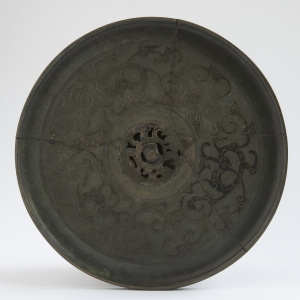
- 龙凤菱纹镜

- “常贵富”蟠螭(pán chī)纹镜
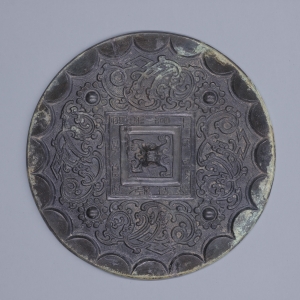
- “所言必当”四乳草叶纹镜
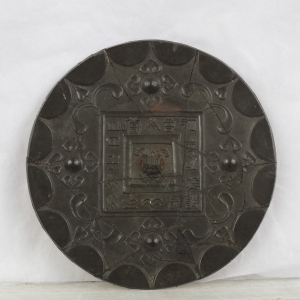
- 星云纹镜
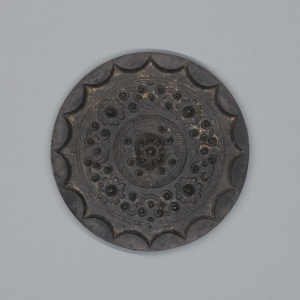
- “昭明”“清白”重圈铭带纹镜
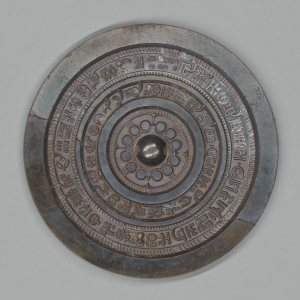
- “长宜子孙”鎏金博局纹镜
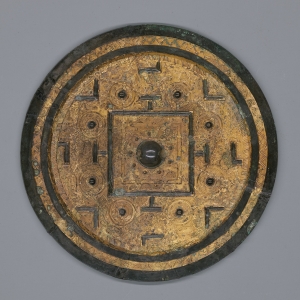
- “新有善同”四神禽兽博局纹镜
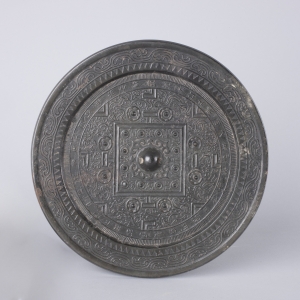
- “李氏”六乳禽兽纹镜
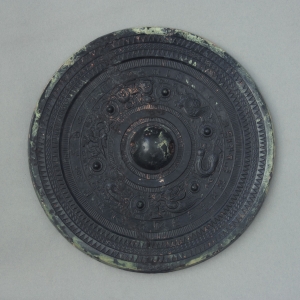
- “尚方”七乳禽兽纹镜

- 东汉(25-220年) 直径19.7厘米,重967克 征集查看更多
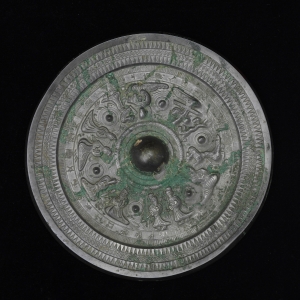

展览介绍
A Feast for the Eyes from Europe: Exhibition of Treasures from the Rosalinde and Authur Gilbert Collection
Foreword
Rosalinde and Arthur Gilbert, known for their exquisite collection of artworks of superb workmanship such as gold and silver wares, snuffboxes and miniature mosaics, built one of the most comprehensive private collections of 20th-century European decorative art.
This exhibition displays 90 pieces of cultural relics, including the best part of their collection, ranging from noble and solemn religious ritual vessels to luxurious and dazzling gold and silver wares, and from exquisite miniature artworks to colorful microscopic masterpieces. The exhibition vividly reflects the lifestyle and social etiquette of European court and aristocracy in the 17th to 19th centuries. It is a visual feast of European history, culture and art.
General Secretary Xi Jinping has pointed out, “The world is a colorful place and civilizations are diverse. Only through exchanges and mutual learning can human civilization flourish.” This exhibition offers a unique opportunity for us to immerse ourselves in Rosalinde and Arthur Gilbert’s world of dazzling masterpieces and appreciate the beauty of Western art.
Chapter One: Nobility and Elegance
Since the 16th century, the use of gold and silver articles has gradually become a trend, with luxurious gold and silverware being both practical and decorative, and a symbol of wealth and status. Gold and silver craftsmen followed the popular trend of the banquet style of the royal families and aristocrats, making breakthroughs and innovations in the fabrication of artworks and producing noble, elegant and diversified utensils to meet the living habits and aesthetic taste of their patrons. With the change of European social structure and the accumulation of wealth, the use of gold and silver wares was no longer exclusive to the nobility, while urban merchants and other emerging classes also had a large number of utensils custom-made.
Chapter Two: Pocket-size Perfection
Miniature portrait and snuffbox were typical representatives of European miniature art from the 16th to the 19th centuries, and they used to be the beloved ornaments carried by the royal nobles. Miniature portraits, often painted with pigments and enamels, emerged in the 16th century, became popular in England and France in the 17th century and gradually spread throughout Europe. Snuffboxes were a sign of nobility and, compared with smoking a pipe, sniffing snuff was considered a more elegant and noble behavior. The exchange of snuff was an important way of socializing, and the emperor even issued a royal decree stipulating the etiquette of the exchange. Snuffboxes made for the noble class according to their personal aesthetics were mostly crafted with gold and silver and inlaid with gems, or decorated with miniature portraits, or fabricated by absorbing the techniques of enamel painting and micromosaic, which made them extremely distinctive and exquisite.
Chapter Three: Microscopic Masterpieces
Mosaic is a form of inlay art that uses colored inlaid pieces such as small stones, shells, tiles and glass to create decorative designs. The craft originated in western Asia, matured in Italy during the ancient Roman period, and gave rise to miniature mosaics during the Renaissance. Unlike traditional mosaic, micromosaics create designs or portraits with extremely fine inlaid pieces of different colors, so they are closer to the effect of paintings. Such exquisitely-made works are often seen on snuffboxes, decorative paintings and furniture. The decorative themes include ancient Roman monuments, religious scenes, landscapes, animals and flowers. In the mid-18th century, micromosaics began to appear on small ornaments, with rich themes, bright colors and unique originality.
Chapter Four: The Gilberts
The British collectors Rosalinde (1913-1995) and Arthur Gilbert (1913-2001) are famous for their collection of gold and silver wares, snuffboxes and micromosaics. These works of art come from Europe, Russia, India and North and South America, forming a comprehensive decorative art collection system.
Arthur and Rosalinde Gilbert launched a wholesale fashion label - Rosalinde Gilbert Ltd - in London in the 1930s. By 1945, the company had become many high-end fashions, after which the couple moved to California, where they found further success in the real estate industry and purchased a villa in Beverly Hills while seeking out unique decorative artwork, and thus began their collecting career. They had long persisted in collecting different types of artworks in certain fields and holding research exhibitions, thus becoming professional connoisseurs in the field of art.
From the very beginning, they had wanted to make their collection available to the public. Some of their collections were on display at the Los Angeles County Museum of Art in the 1970s.In 1996, the Gilberts donated their world-renowned collection to the United Kingdom. In 1999, Queen Elizabeth knighted Gilbert in recognition of his cultural and philanthropic contributions, and in 2008, the couple's collection of more than 1,200 objects was collected in the Victoria and Albert Museum.
展品欣赏
-

-

-
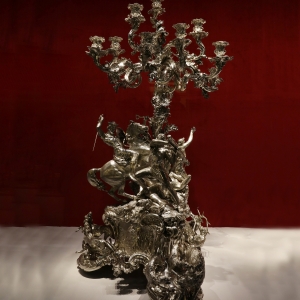
-
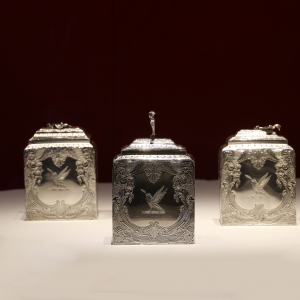
-
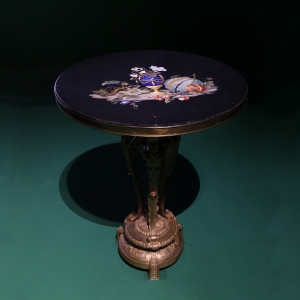
-
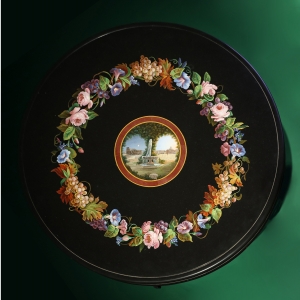
-
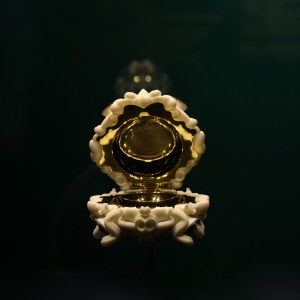
-

-

-

-

- 多层饰盘查看更多
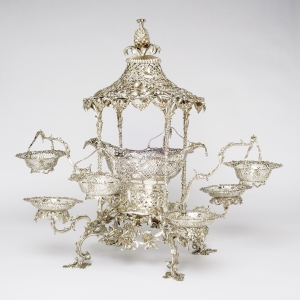

展览介绍
Hearing and Seeing Huxiang - the Exhibition of Hunan Musical Relics
Foreword
Music is the forerunner of civilization, nourishes the childhood of human beings, and carries the future of the nation. Hunan is located in the middle reaches of the Yangtze River, south of Dongting, and is one of the important cradles of Chinese civilization. The landscapes in Hunan are gorgeous, everything is vigorous, and rivers flows for ages, nurturing unique and rich musical culture.
More than 6,000 years ago, the sounds of ancient musical instruments(stone whistles, pottery balls and pottery drums) flied on the Liyang Plain, accompanied by the joy of work; on the banks of the Weishui River, resounding with the sound of Nao of the Shang and Zhou Dynasties; on the banks of the Miluo River, the sorrow of Quyuan echoed; various types of musical performances acted in the Han and Jin Dynasties; exotic music prospered in the Sui, Tang, Song and Yuan Dynasties; ancient music of Liuyang opened a new chapter in ritual music culture.
Music is the common language of all mankind, thousands of years have passed, can these silent notes in history be awakened again today? Listen,the sound of Huxiang—the most beautiful language, either whispered or chirped, soothing or abrupt, soft or strong, deep or distant, tells the longing and call of the ancestors of Huxiang for a better life. Let us start a wonderful audio-visual journey in this eternal and beautiful music world!
Chapter One
In the late Shang and the early Zhou Dynasties, local artisans in Hunan, a region influenced by the Shang culture of the Central Plains, created a large bronze musical instrument-Nao. The further development of bronze instruments such as Nao, Zhong, and Bo, and the determination of two-tone effect, laid the foundation for the ritual music culture of the Zhou Dynasty.
Chapter Two
From the mid-Spring and Autumn Period to the Warring States Period, Hunan was incorporated into the territory of Chu(State), and its music culture showed the solemn and profound, romantic and sentimental beauty of Chu tunes, including the ritual music needed to maintain the ritual system, as well as the folk music to release the mind, and the verses of Chu, which not only pleased people, but also entertained the gods. The diversity of musical instruments has also foster the "Eight-Tone Harmony" musical performance form, which constituted the grandeur of Chu’s music and dance.
Chapter Three
Since the Qin and Han Dynasties, Hunan has become an important part of China's unified multi-ethnic country, and many material relics of musical culture have been left throughout the ages. During the period of the Han, Wei and Jin Dynasties, the traditional Chinese music form changed from the ritual music to the dance music, and a large number of excavated objects and portrait bricks and stone reliefs of Han Dynasty showed various types of musical performances that combined instrumental music, singing and dancing, acrobatic and other art forms at that time, reflecting time features of people’s pursuit of high-quality and joyful life.
Chapter Four
The Tang Dynasty saw unprecedented prosperity in culture and art, with unprecedented development in dance music, especially court ·music, and the exotic style was also spread to the land of Hunan. From the late Tang Dynasty to the Song Dynasty, the music of the literati became unique, and the entertainment culture of the citizens also flourished, especially during the Yuan and Song Dynasties, the dramas were popular throughout the country. The musical relics unearthed in Hunan reflected the flourishing musical art achievements of this period under the heyday of national unification.
Chapter Five
Since the Ming and Qing Dynasties, Huxiang music has entered a new stage of historical development, people of civil and military ability could express their political aspirations through music, conveying their sentiments of governing the world and saving the country, as well as their desire to survive and innovate. In addition, there is music of the ethnic groups, which is cheerful and joyful, commemorates the spirits of the ancestors, and encourages production.The "Ding Festival" at the Wenmiao Temple in Liuyang is a direct testimony to the traditional culture of respecting Confucianism, and highlights the magnificent music of Hunan.
Last Chapter
Gathering together, on the shore of Hunan, the ancient music is still in the ears, and the familiar melody comes out naturally. Ancient poetry and paintings are displayed, the music is melodious and acclaimed...
展品欣赏
- 陶球3件
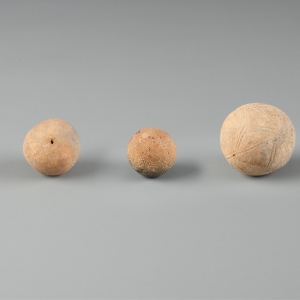
- 陶鼓
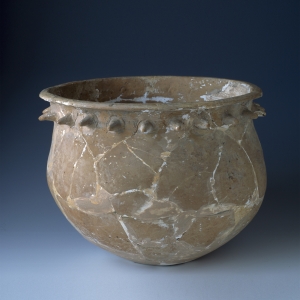
- 象纹铜铙

- 宁乡北峰滩兽面纹大铙
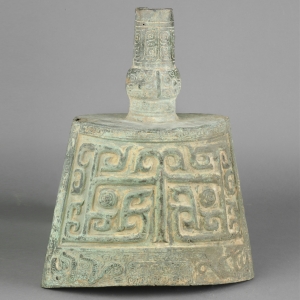
- 虎纹铜铙
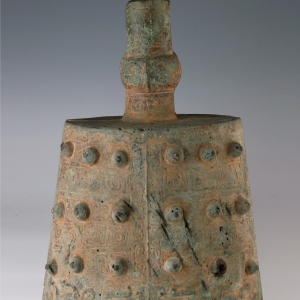
- 云纹铜铙

- 云雷纹铙
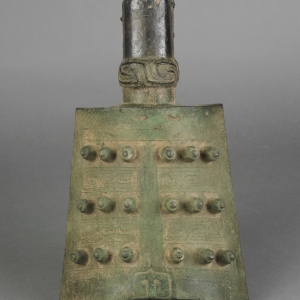
- 猪磬

- 四虎镈
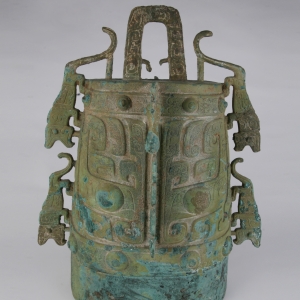
- 士父铜钟

- 青铜铎

- 战国(公元前475—前221年)通高30.3、甬长10.5厘米 湖南省博物馆藏查看更多


展览介绍
“奋进新时代”主题成就展湖南展区
湖南省深入贯彻落实习近平总书记“着力打造国家重要先进制造业、具有核心竞争力的科技创新、内陆地区改革开放的高地”等重要指示,锚定闯出新路子、展现新作为、彰显新担当、谱写新篇章的角色定位,高质量发展取得新成效,改革开放实现新突破,文化建设取得新进展,民生福祉达到新水平,生态文明建设有了新进步,在三湘大地上全面建成了小康社会。
展品欣赏
- 总书记在十八洞考察

- 十八洞村苗绣特产农民专业合作社的绣娘在生产苗绣产品
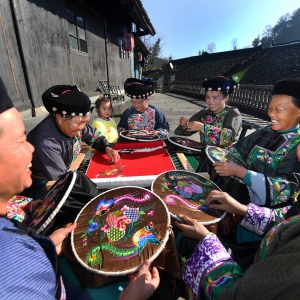
- 十八洞村村民载歌载舞欢聚一堂

- 易地搬迁脱贫一批
- 扶贫小额信贷“宜章模式”

- 教育扶贫斩“穷根”
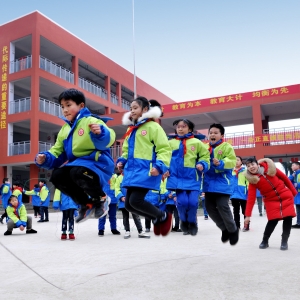
- 实施“七大工程”

- 脱贫攻坚让湖南省贫困地区老百姓过上了幸福美满的生活
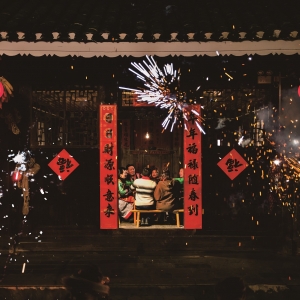
- 湖南省凤凰县菖蒲塘村标准化农业科技示范园
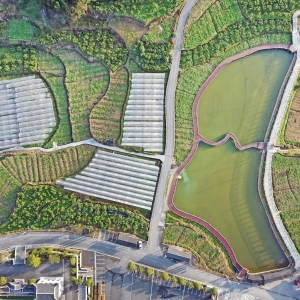
- 湖南省衡阳市祁东县黄土铺镇黄花菜种植专业村

- 长株潭都市圈——打造中部崛起核心增长极

- 推动长株潭都市圈一体化发展,带动湖南省各市州融入中部地区高质量发展大战略。图为长株潭都市圈三个核心城市。——长沙查看更多

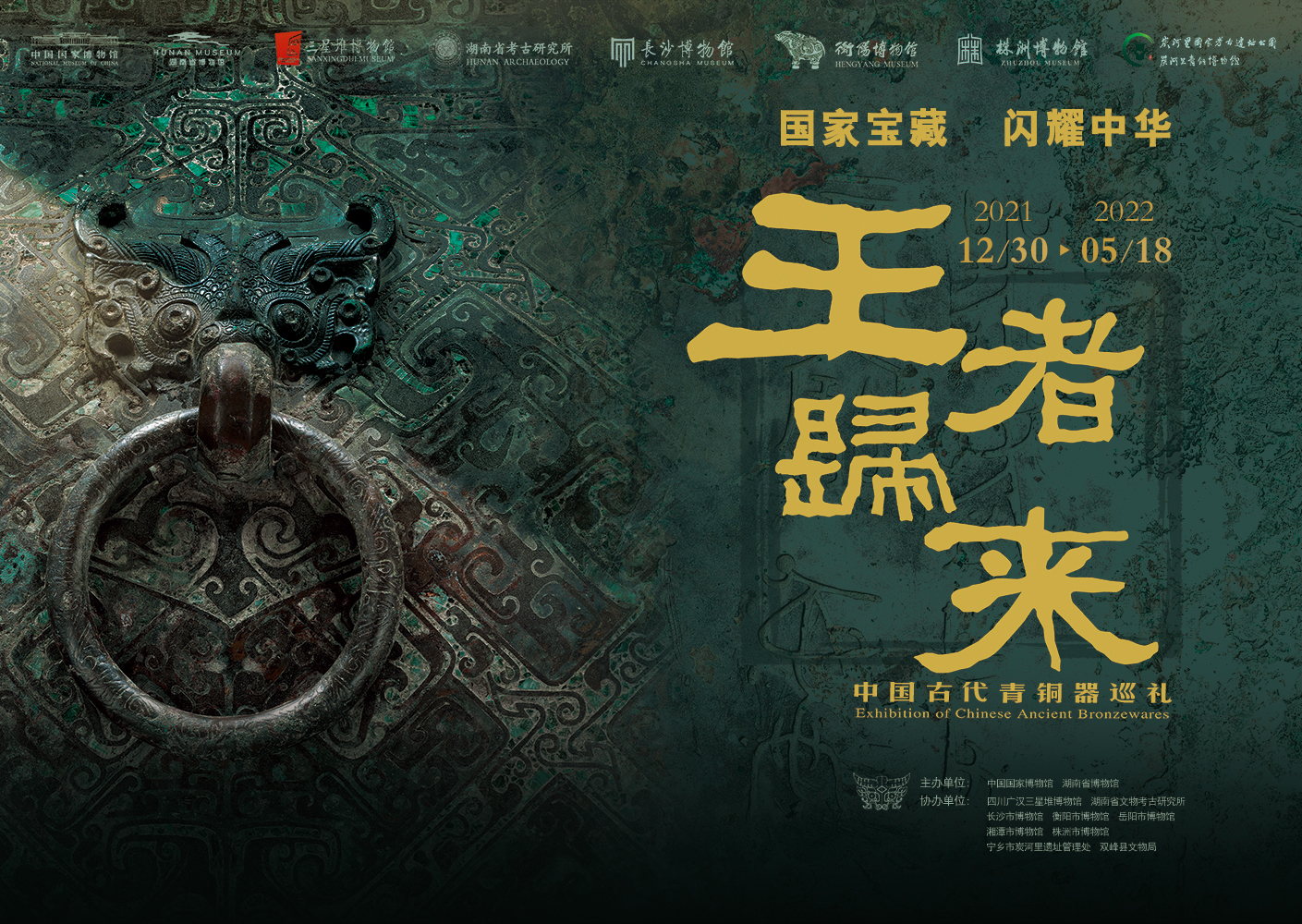
展览介绍
Exhibition of Chinese Ancient Bronzewares
Bronzewares are classical, dignified, vigorous and elegant. They shine with the coldness of metal texture, but contain the temperature of humanity.
Chinese bronzewares were flourished in the three dynasties of Xia, Shang, and Zhou; they were regarded as an instrument of the king, demonstrating the mystery, solemnity and majesty of the temple, kingship and order. Chinese ancestors melted the alloy with magnificent imagination, cast different models, poured their pious faith in it, decorated it with bizarre and complicated patterns, and inscribed the major events of the ancestral temple and the country in it. Especially in the Shang and Zhou dynasties, bronzewares carried the function of distinguishing kinship and hierarchy, and establishing norms of etiquettes and laws. Even after entering the Iron Age, bronzewares, as well as the patriarchal system and ritual and music culture represented by them still show people’s will and dignity in Chinese social life, and precipitate into the cultural gene in the blood of the Chinese people. This is the essential difference between Chinese bronzewares and Western ones, and it is also the reason why Chinese people have been studying and developing copper making skills and making new achievements in the following thousands of years.
From treasures of the National Museum of China to the important bronzewares of the Hunan Museum and Sanxingdui Museum in Guanghan city, Sichuan province, this exhibition gathers 280 pieces(sets) of valuable bronzewares. They are important carriers of ancient material culture and spiritual culture. We can admire the solemnity and elegance of bronzewares in Shang and Zhou dynasties, and see the inheritance and changes of bronzewares from Han to Ming and Qing dynasties. Splendid bronzewares were handed down from generation to generation; the king is back, and its legends never die. In the long river of time, transiting from thick and heavy to light and handy, bronzeware has gone from the imperial court to the folk, awakening the ritual and music cultural memory of Chinese people. Here, it is expected that we can meet the real look of Chinese traditional culture again.
展品欣赏
- 兽面纹单柱爵
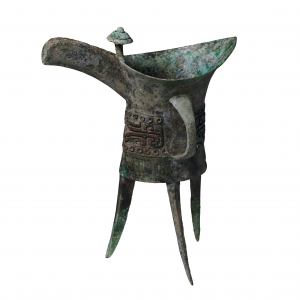
- 兽面纹斝(jiǎ)
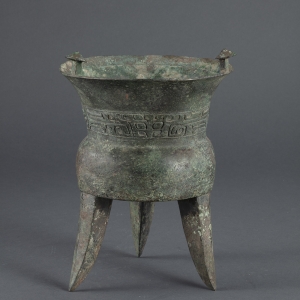
- 兽面纹鼎
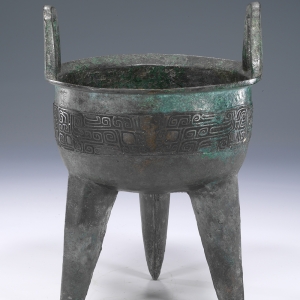
- 兽面纹方觚
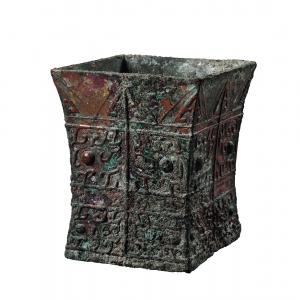
- 人面纹方鼎
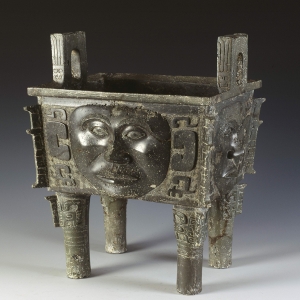
- 凤鸟纹“戈”卣(yǒu)、玉器一组
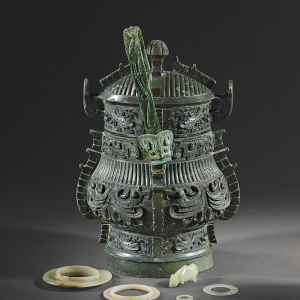
- 兽面纹铜瓿
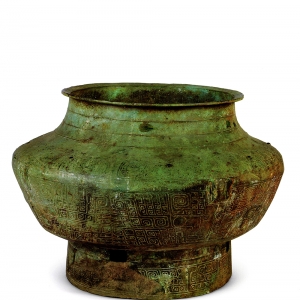
- “冉”兽面纹铜爵
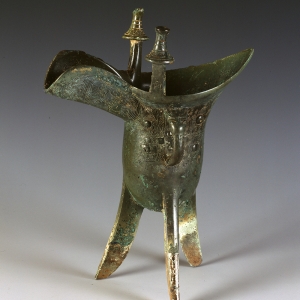
- “遣盄(diào)父”豆(铺)
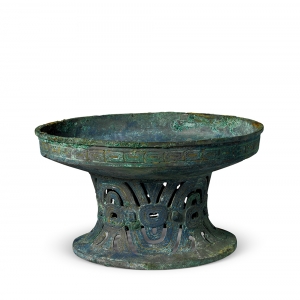
- 动物纹提梁卣
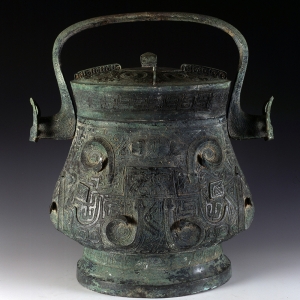
- “宗人”簋

- 西周 高15.4厘米,口径20.8厘米,耳间距28厘米 征集 中国国家博物馆藏查看更多
